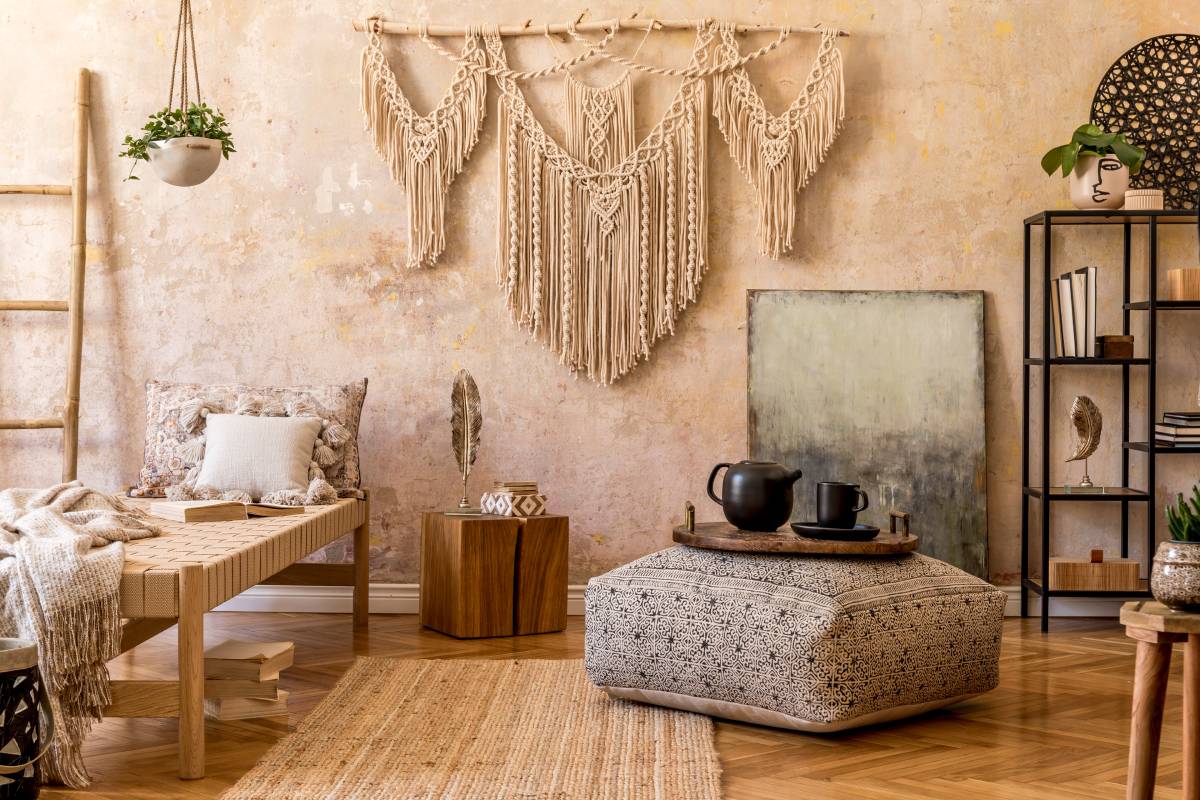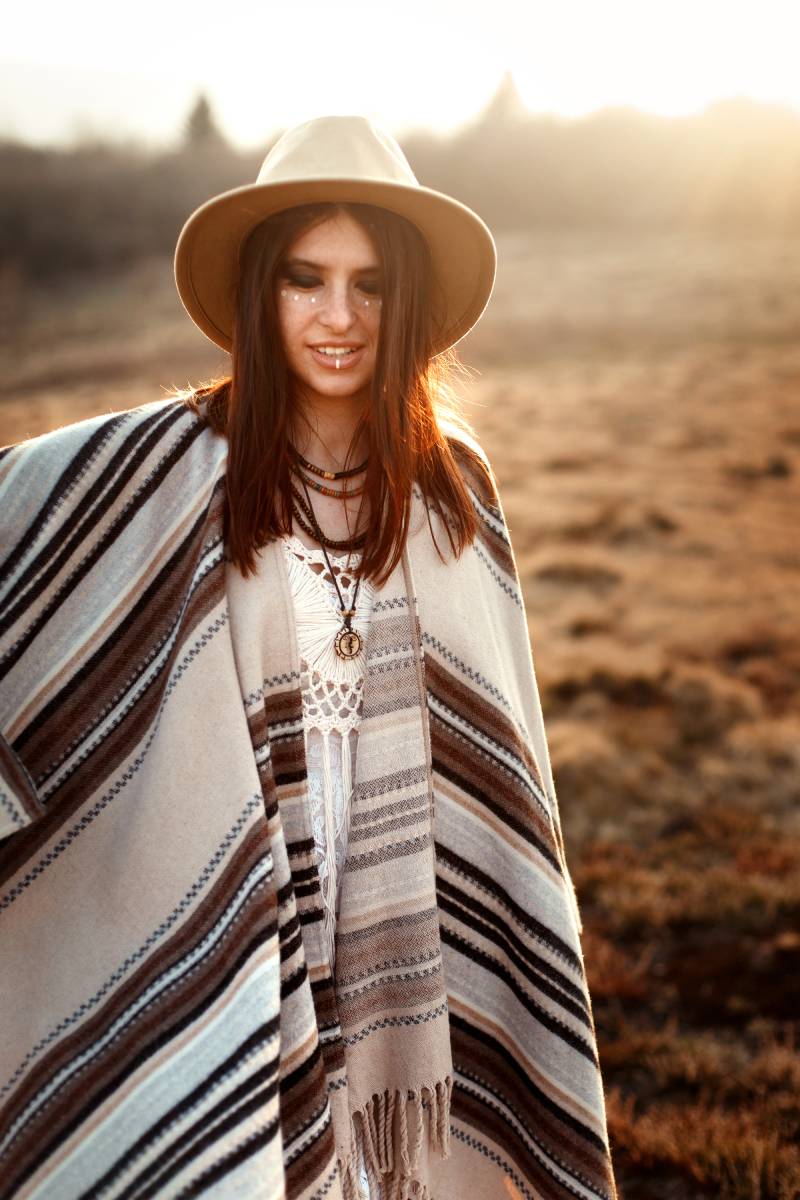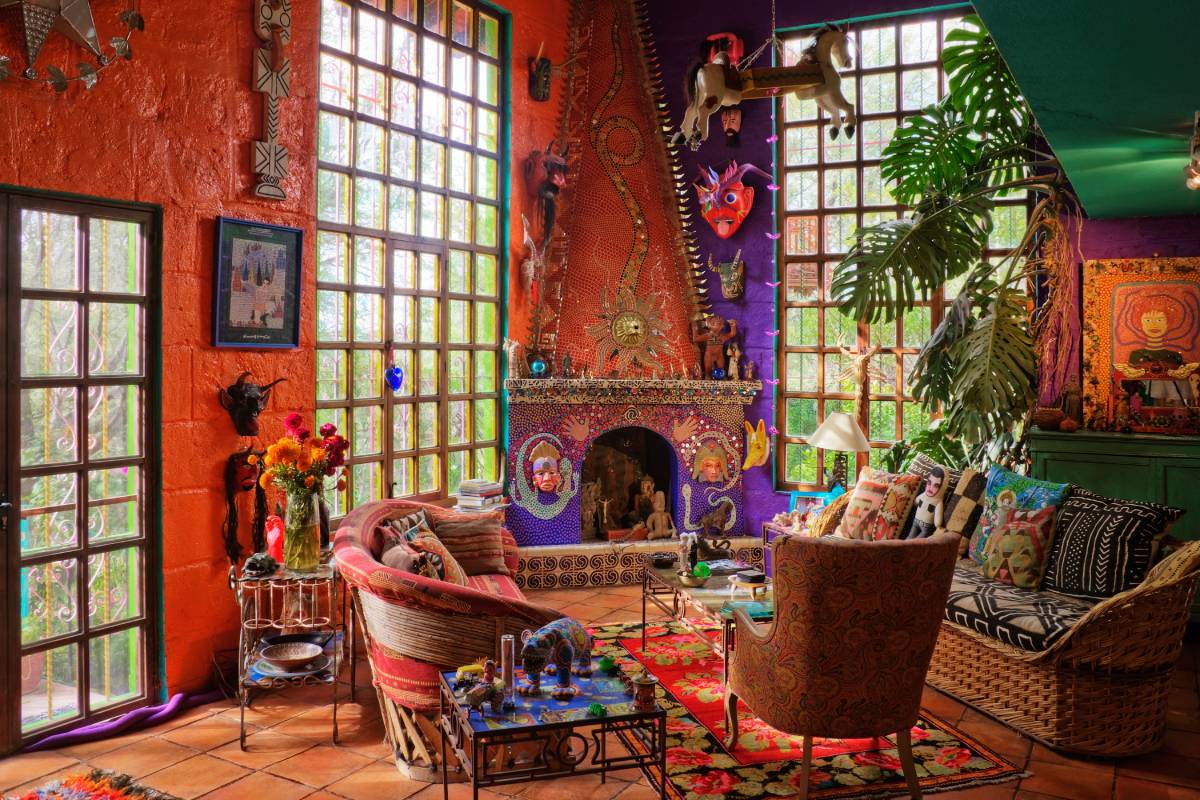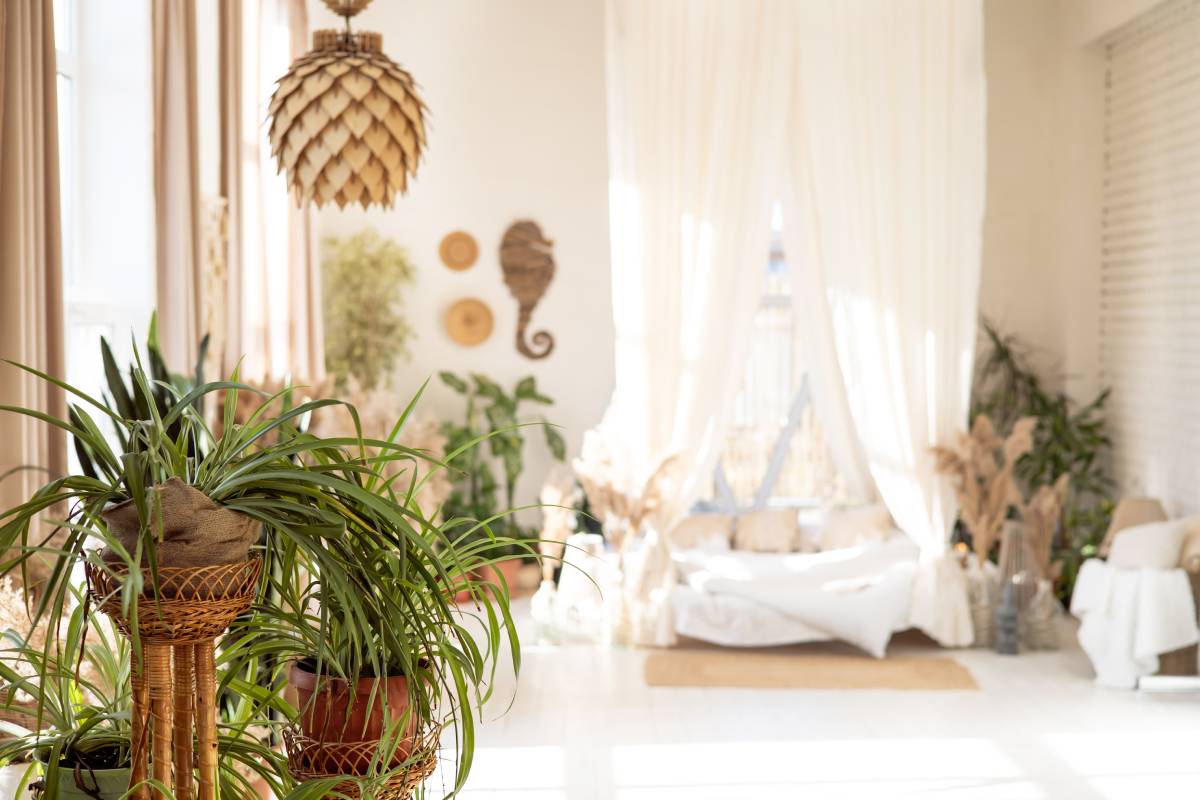What’s the history of boho style? Where did it come from? How to decorate in boho style?
Culture, House & Garden, LifeStyle Apr 30, 2024

Boho style, with its vibrant colours, eclectic patterns, and laid-back vibe, has become a staple in interior design. But where did this free-spirited aesthetic originate?
To truly understand boho décor, it’s essential to delve into its rich history and cultural influences. From the streets of 19th-century Paris to the hippie communes of the 1960s, the boho style has been shaped by a diverse array of movements and traditions.
In this article, we’ll explore the origins of the boho style and how it has evolved into the beloved aesthetic it is today.
You might also read:
- What is a Shaker-style kitchen? Are Shaker kitchens still on trend? What is the best colour for a shaker kitchen?
- How to create a functional and stylish home office and the benefits of having a dedicated workspace.
What’s the history of boho style? Where did it come from?
The history of boho style, short for bohemian, is as colourful and diverse as the style itself. It emerged as a counter-cultural movement in the 19th century and has evolved over time, drawing inspiration from various sources around the world.
Origins
The term “bohemian” originally referred to unconventional lifestyles associated with artists, writers, and intellectuals in 19th-century Europe, particularly in Paris’ bohemian quarter. These individuals rejected bourgeois values and embraced a more free-spirited and non-conformist way of life.
19th Century Bohemia
 Bohemianism gained prominence in France during the early 19th century, with creative minds congregating in neighbourhoods like Montmartre in Paris. Here, they sought artistic freedom and a departure from societal conventions. The bohemian lifestyle was characterized by creativity and a rejection of mainstream values.
Bohemianism gained prominence in France during the early 19th century, with creative minds congregating in neighbourhoods like Montmartre in Paris. Here, they sought artistic freedom and a departure from societal conventions. The bohemian lifestyle was characterized by creativity and a rejection of mainstream values.
This movement was influenced by the Romani culture, with its nomadic lifestyle and love for art and music. It embraced diversity and non-conformity, setting the stage for the eclectic mix of influences that would define boho style in the decades to come.
Influence of Romani Culture
The term “bohemian” originates from the French word “bohémien,” which was initially associated with the Romani people, and mistakenly believed to have originated from Bohemia, a historical region in the Czech Republic. Romani culture, with its nomadic lifestyle, colourful clothing, and appreciation for music and art, profoundly impacted the emerging bohemian aesthetic.
The Romani people’s wandering lifestyle and rich cultural heritage inspired bohemians to embrace a similar sense of freedom and individuality. Romani influences can be seen in the vibrant colours, eclectic patterns, and love for storytelling that characterize the boho style today.
Despite the misconception about their origins, Romani culture played a significant role in shaping the bohemian movement, contributing to its ethos of non-conformity and celebration of diversity. As bohemianism spread across Europe and later the world, it continued to draw inspiration from a variety of cultures, including the Romani, creating a melting pot of influences that defines modern boho style.
Spread to the United States
Bohemianism made its way to the United States in the late 19th and early 20th centuries, particularly in cities like New York and San Francisco. The Greenwich Village and Haight-Ashbury neighbourhoods became hubs for bohemian culture, attracting artists, poets, and musicians.
The Hippie Movement
The 1960s witnessed a resurgence of the bohemian spirit with the rise of the hippie movement. Hippies rejected mainstream culture and embraced peace, love, and freedom as their guiding principles. Their unconventional fashion, characterized by flowing garments, tie-dye, and natural materials, reflected their rejection of societal norms. Hippies also had a deep connection with nature, often advocating for environmentalism and communal living.
Eastern spirituality played a significant role in shaping the hippie ethos and, consequently, boho style. Many hippies embraced practices such as yoga, meditation, and Eastern philosophy, seeking spiritual enlightenment and inner peace.
The hippie movement had a profound influence on the development of boho style as we know it today. Its emphasis on individuality, creativity, and a rejection of materialism resonated with the bohemian ideals of previous generations. This era introduced elements like macramé, fringe, and psychedelic patterns into boho fashion and décor.
Influences from Around the World
Boho style has always been influenced by cultures from around the world. From the exoticism of Orientalism in the 19th century to the globalization of the 21st century, boho décor incorporates elements from various cultures, including Moroccan, Indian, African, and Native American.
Modern Boho Style
Today, boho style remains popular, characterized by its eclectic mix of patterns, colours, and textures. It has become more mainstream, with retailers offering bohemian-inspired décor and fashion. However, at its core, boho style still embodies a sense of freedom, individuality, and creativity.

What is boho style of decoration?
Boho style of decoration is all about free-spiritedness, creativity, and an eclectic mix of patterns, colours, and textures. It’s like bringing a piece of the vibrant world into your home. Here’s a closer look at what makes boho décor so unique and how you can incorporate it into your space.
The Basics of Boho Style
Boho style draws inspiration from various cultures, especially those with a rich history of artistic expression, such as Morocco, India, and Mexico. Here are some key elements:
- Rich Textures: Think layered rugs, plush cushions, and woven tapestries. Incorporating different textures adds depth and cosiness to the space.
- Bold Colors: Boho is not afraid of colour! From deep jewel tones to earthy hues, you’ll find a kaleidoscope of colours in boho décor. Don’t be afraid to mix and match contrasting colours.
- Global Patterns: Ethnic prints like ikat, paisley, and tribal motifs are staples of boho style. These patterns add visual interest and tell a story of travel and adventure.
- Natural Materials: Embrace the beauty of natural materials like wood, rattan, and jute. These elements bring warmth and authenticity to the space.
- Plants Everywhere: Greenery is a must-have in boho décor. Potted plants, hanging ferns, and succulents breathe life into the space and connect it with nature.
How to Achieve Boho Chic
Now that you know the basics, here’s how to incorporate boho style into your home:
1. Start with a Neutral Base
Choose a neutral colour for your walls and furniture as a backdrop for the vibrant boho elements. Whites, beiges, or soft greys work well to let other décor pieces shine.
2. Layer, Layer, Layer
Layering is key to achieving that cosy boho look. Layer rugs on top of each other, pile up cushions and throws on your sofa, and mix different textiles for visual interest.
3. Mix and Match
Don’t be afraid to mix patterns, colours, and styles. Combining different elements adds personality and creates that effortless boho vibe. For example, pair a Moroccan rug with a colourful Kilim pouffe.
4. Incorporate Vintage Finds
Scour thrift stores, flea markets, and vintage shops for unique pieces that add character to your space. Vintage furniture, eclectic artwork, and quirky accessories all contribute to the boho aesthetic.
5. Embrace Greenery
Fill your space with plants of all shapes and sizes. Hanging plants in macramé hangers, potted cacti on shelves, and large leafy plants in corners bring freshness and vitality to your home.
6. Add Global Accents
Incorporate elements from different cultures to give your space an eclectic flair. This could be a Moroccan lantern, a Turkish kilim rug, or a collection of African baskets.
7. Create Cozy Nooks
Designate cosy corners with floor cushions, pouffes, and soft throws where you can relax and unwind. These intimate spaces add to the laid-back atmosphere of boho style.
In conclusion
The boho style is not just a passing fad, it’s a celebration of different cultures that have come together over centuries. It all started in the bohemian neighbourhoods of European cities during the 19th century and then gained popularity during the hippie movement of the 60s. Boho decor is all about embracing creativity, and individuality, and being inspired by global influences.
Today, it still continues to inspire designers and homeowners alike. It reminds us that diversity is beautiful, and we should express ourselves in our homes and lives in the way that feels most authentic. Whether it’s layering rugs in your living room or adding a touch of whimsy to your wardrobe, always remember that boho style is not just decoration, it’s a celebration of life’s rich tapestry.
